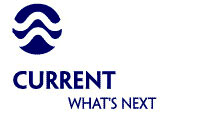 There have been some murmurings as of late within the industry about Current USA’s future plans. Recently retailers have been told that several metal halide series have been discontinued and that they should be removed from inventory. What does this recent development tell us? A lot actually.
There have been some murmurings as of late within the industry about Current USA’s future plans. Recently retailers have been told that several metal halide series have been discontinued and that they should be removed from inventory. What does this recent development tell us? A lot actually.
When browsing Current’s website you can clearly see the Sunpod HQI and Sundial HQI lines have been listed as discontinued. These two lines were once the bread and butter in Current’s lighting arsenal as it represented a large portion of their sales. It is no surprise really, metal halide systems were popular back in the glory days of reef keeping.
Reefers were demanding these high output systems to replace their older and less powerful PC lighting systems. Along with that though, this growth was spurred on by the rage of popularity that hit the SPS type of corals. SPS corals became popular because if properly maintained they can grow like weeds, and to because of their bright colors which can be easily maintained by the average hobbyist. Because of those reasons SPS became popular. It was ingrained into people’s heads that if you wanted to keep SPS successfully you had to have a metal halide unit. So off people went by the thousands buying up Metal Halide systems to keep their prized SPS colonies alive.
Most hobbyists were completely happy with either a 70 watt or 150 watt metal halide fixture/ballast. After all you would not need anything larger then that. But after time, the 150 watt system turned into the 250 watt system. Soon thereafter the 250 watts turned into 400 watts. Hobbyists had all this massive amount of lighting power and growing corals like hot cakes. Life was good.
Well it was, up until the power bill came. Everyone started to realize that these metal halide lighting systems were really bright and powerful but like most all things had drawbacks. One of the biggest was power consumption. These lighting units just ate up raw power for lunch, and then some. You would hear reefers talk back and forth on how much their power bill cost from the previous month, and ways to make the metal halides more efficient. Then out came the “advanced reflectors” which were advertised to make your metal halide light output more efficient which would mean that you would have to run the lights less due to increased efficiency which would in turn reduce your electricity bill.
Then, the industry wanted efficient lighting, it was tired of these metal halide energy wasters. We looked elsewhere for efficient lighting, and the first place we found was Germany. Germans knew a thing or two about efficiency. The T5 high output lighting systems which originated over there were more efficient then metal halides and transferred less heat to the water to boot. T5’s didn’t catch on at first, you had your naysayers who said that you couldn’t keep SPS alive with T5s. In time, though, that claim was proved false and the popularity of the T5’s caught on.
It hasn’t been until recently that LEDs have became a popular option with hobbyists looking for a cheaper and more efficient lighting system. LEDs had year of year growth with market share and were continuing in popularity. However, thanks to a Patent Troll the LED’s have taken a backseat for the time being, but we would imagine that it won’t be to much longer before another company starts aggressively going after the LED market, a market that is seeing increased interest with the current economy.
While we don’t have any information that leads us to believe that Current is develiping LEDs it certainly is a possbility. And we like the most of you out there wouldn’t mind that one bit.



